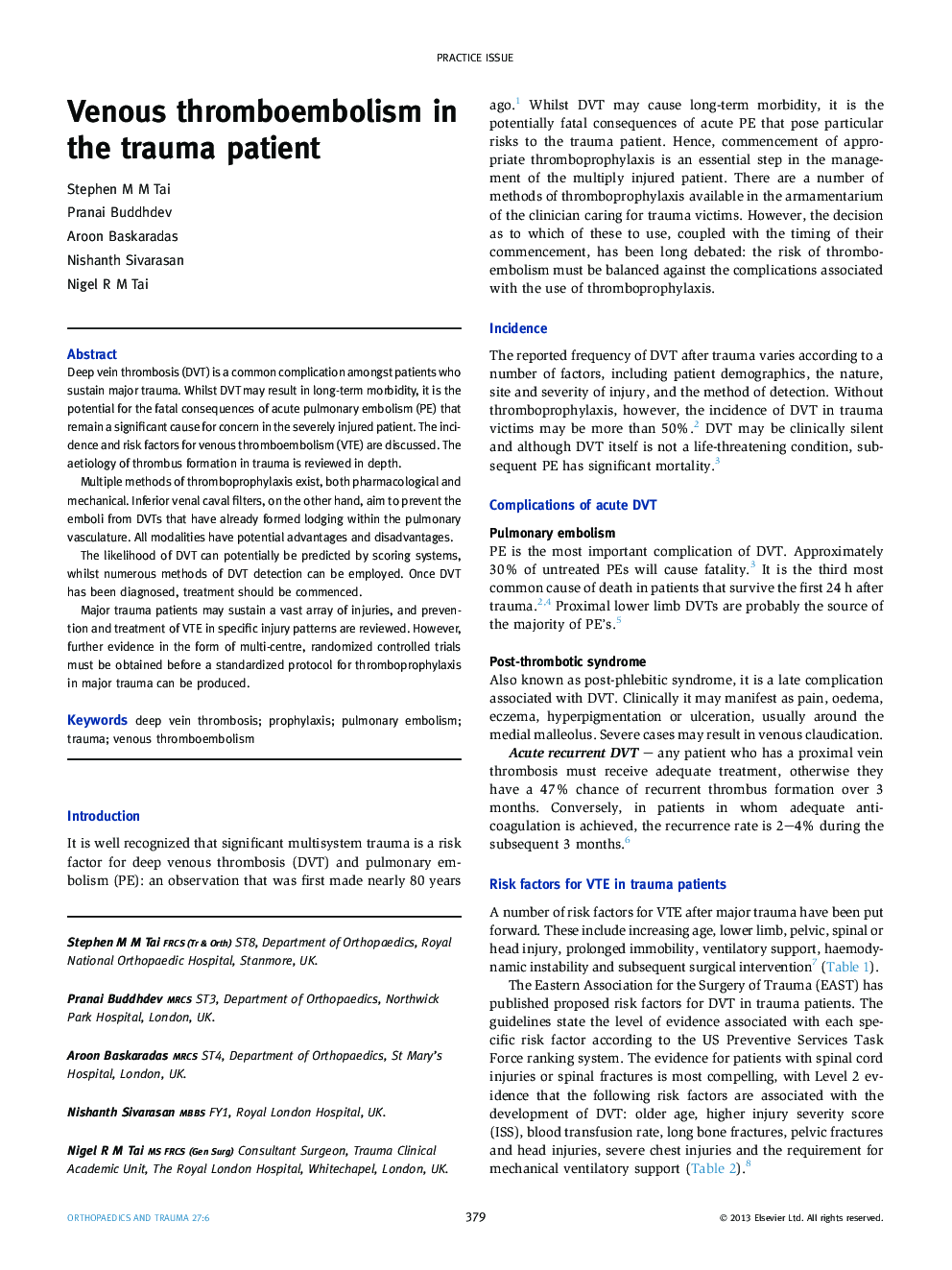| Article ID | Journal | Published Year | Pages | File Type |
|---|---|---|---|---|
| 4080398 | Orthopaedics and Trauma | 2013 | 14 Pages |
Deep vein thrombosis (DVT) is a common complication amongst patients who sustain major trauma. Whilst DVT may result in long-term morbidity, it is the potential for the fatal consequences of acute pulmonary embolism (PE) that remain a significant cause for concern in the severely injured patient. The incidence and risk factors for venous thromboembolism (VTE) are discussed. The aetiology of thrombus formation in trauma is reviewed in depth.Multiple methods of thromboprophylaxis exist, both pharmacological and mechanical. Inferior venal caval filters, on the other hand, aim to prevent the emboli from DVTs that have already formed lodging within the pulmonary vasculature. All modalities have potential advantages and disadvantages.The likelihood of DVT can potentially be predicted by scoring systems, whilst numerous methods of DVT detection can be employed. Once DVT has been diagnosed, treatment should be commenced.Major trauma patients may sustain a vast array of injuries, and prevention and treatment of VTE in specific injury patterns are reviewed. However, further evidence in the form of multi-centre, randomized controlled trials must be obtained before a standardized protocol for thromboprophylaxis in major trauma can be produced.
